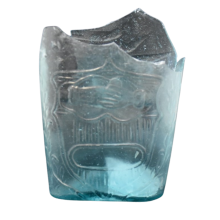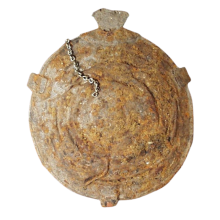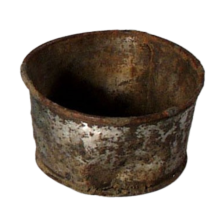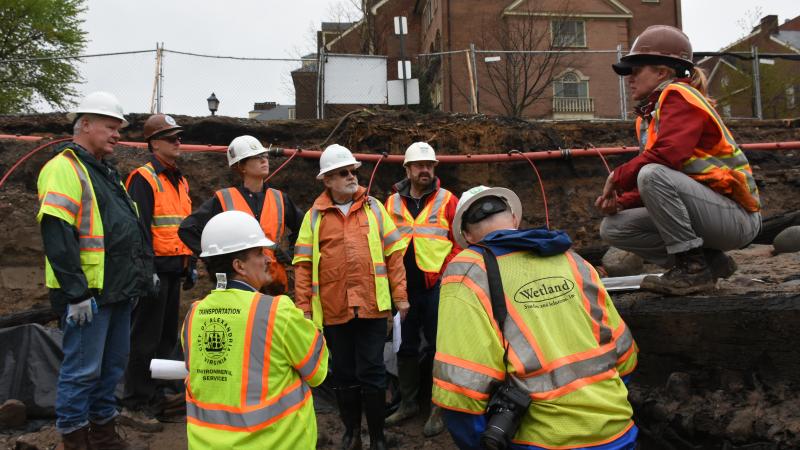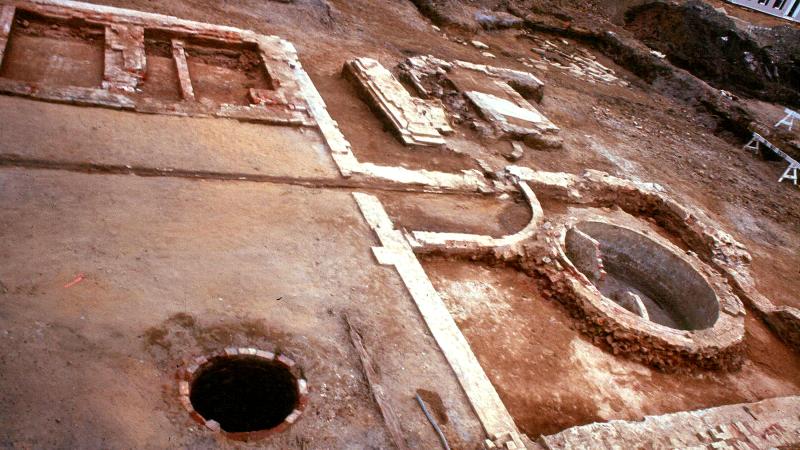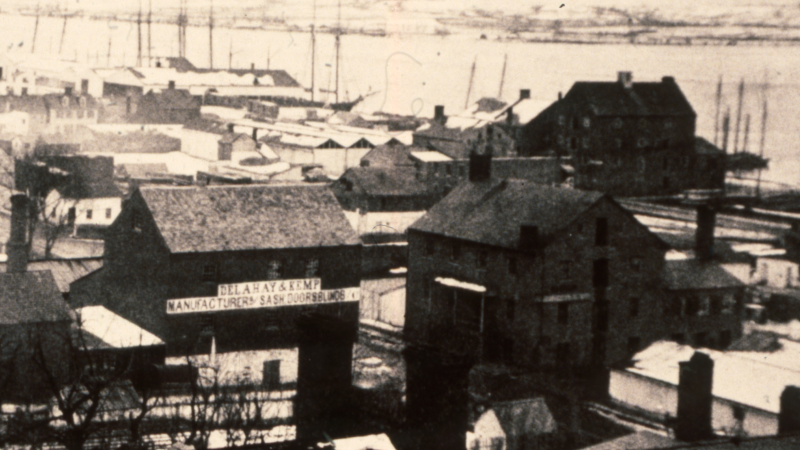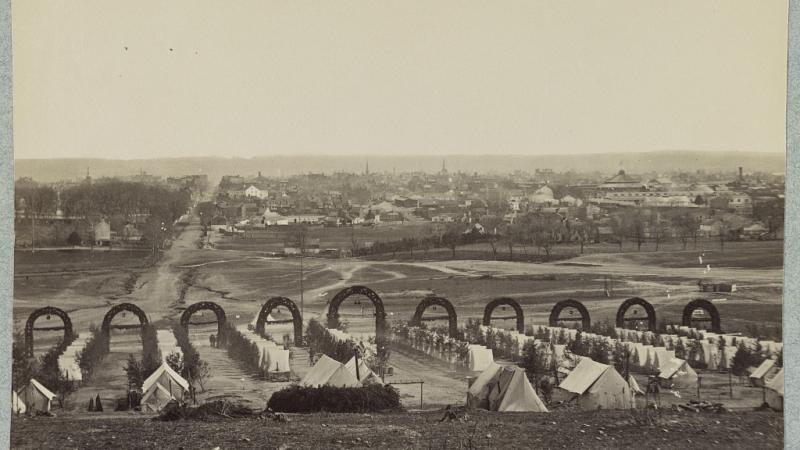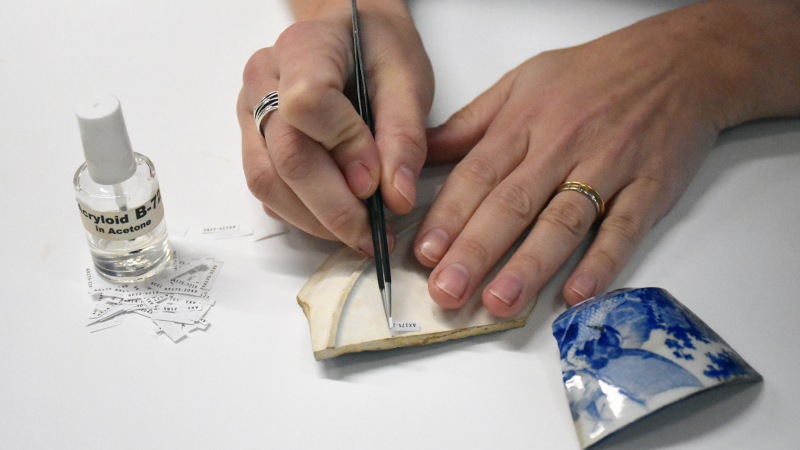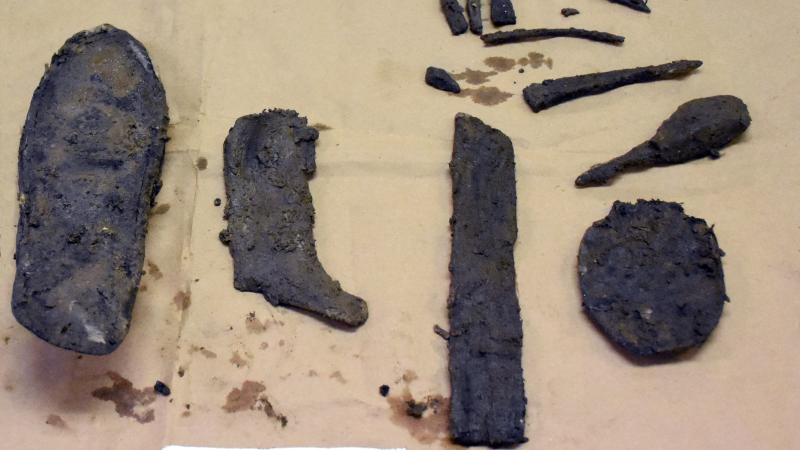
The Lee Street Site: Fighting for Freedom
A Community Digs its Past: The Lee Street Site
The Lee Street exhibit reveals the archaeological process and the history of Alexandria as seen through the lens of the Lee Street Site (archaeological site 44AX180) and several other waterfront sites.
Preserved on the Lee Street Site was a cross-section of Alexandria's history from its founding in 1749 into the 20th century. Eighteenth-century wharves remained intact below remnants of a bakery, taverns, and residences that had sprung up on the bustling waterfront. The block was later used by the Union Army as a hospital support facility for the huge influx of soldiers during the Civil War. These layers of time were preserved under shallow foundations and a paved parking lot. The exhibit weaves together the story of the wharves, taverns, bakery and Civil War privy excavated at the corner of Lee and Queen Streets with the step-by-step process of archaeology from research and excavation to lab work and conservation.
Civil War - Fighting for Freedom
The fight to end slavery permanently changed life in Alexandria.
Union troops took control of Alexandria the day after Virginia seceded from the United States.
Although no battles were fought in the city, Alexandria became a major supply depot. It served as a busy thoroughfare for troops, a convalescent center for soldiers, and a refuge for over 8,000 individuals seeking freedom in Union-occupied territory.
“Its streets, its docks, its warehouses, its dwellings, and its suburbs have been absorbed to the thousand uses of war.” - George Alfred Townsend, “Campaigns of a Non-Combatant.” 1866.
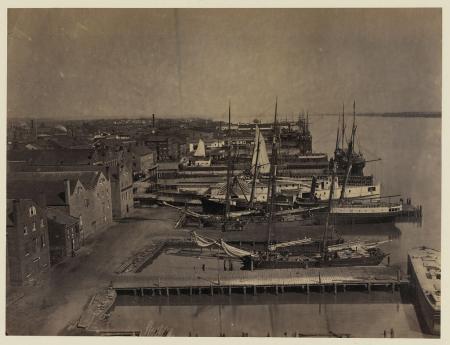
Strategic Location
At the dawn of the Civil War, Alexandria sat in a key location on the Potomac River, right outside of Washington, D.C. Rail lines, roads, and waterways connected the city to the rest of Virginia and beyond.

Refugees of War
In the decades leading up to the Civil War, slave traders trafficked thousands of enslaved people through Alexandria to the deep south. The war allowed enslaved people to seek freedom in Union-occupied Alexandria. Self-emancipated Black refugees, called contrabands, sought federal protection. They joined an existing community of free and enslaved people established since Alexandria’s founding in 1749. There was inadequate healthcare, food, and shelter – all of which required new schools, camps, hospitals, and cemeteries.
A rapid influx of soldiers and refugees from the south brought the reality of war to Alexandria. Houses became hospitals, fields became forts, and buildings became barracks. The Union Army used the block where the Lee Street Site was located as a support complex providing for nearby hospitals. The United States Colored Troops (USCT) were formed in 1863 after the Emancipation Proclamation. Many of the USCT were trained in Alexandria, served in the Virginia theatre, and returned to the city when injured. Those members of the USCT that passed away in the city were buried at Alexandria National Cemetery on Wilkes Street.
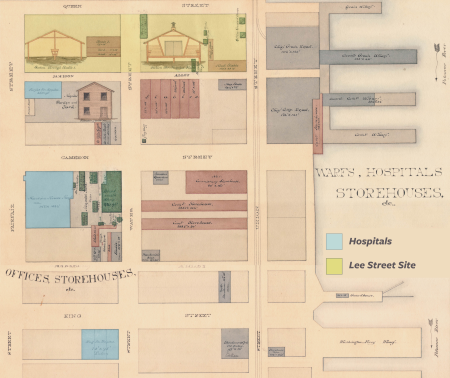
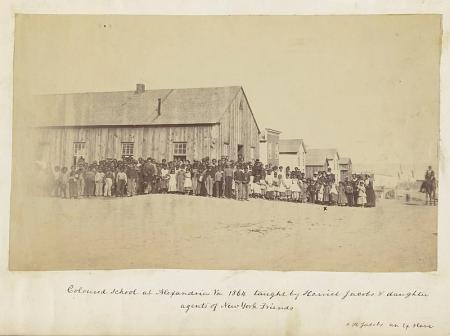
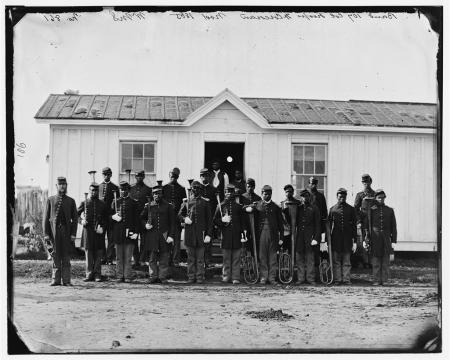
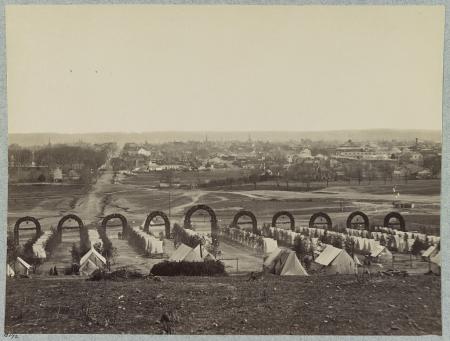
Union Support Complex

The archaeological study of the Lee Street Site shows the role that Alexandria played in the Civil War. A mess hall, privy (sinks), hospital stables, harness shop, shed, office, and guardhouse are shown on the block in this US Quartermaster map. The site's artifacts and features reveal life in wartime.
Deadly Technology
Older smoothbore muskets used buck and ball (1) which was deadly at close range. Newer rifled muskets and conical Minie balls (2) had better long-range accuracy and were easier to load. This technology made them more harmful.


Medical Care
Minie balls caused more tissue and bone damage than earlier buck and ball shot. Contaminated wounds led to infection. Civil War surgeons quickly learned that amputation was one of the most effective treatments for these kinds of severe injuries.
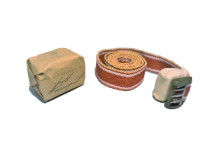
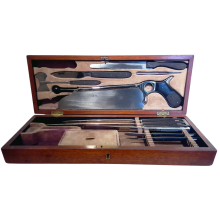
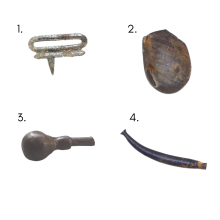
In the Stables
Horses played a major role in the Civil War. The Quartermaster Map shows stables on this block, built specifically for hospital use.

Life of a Soldier
Union troops were outfitted with uniforms, canteens, and haversacks for carrying food. Soldiers passing through the Lee Street block discarded or lost these objects.
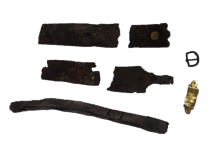

This canteen, tin cup, and flask were likely used by soldiers. The flattened Union Bullseye canteen used to have a cork stopper, woolen cover, and cotton or leather sling and strap. The glass “Shield and Clasped Hands” whiskey flask was popular in the 1860s, inspired by the struggle to preserve the Union.
